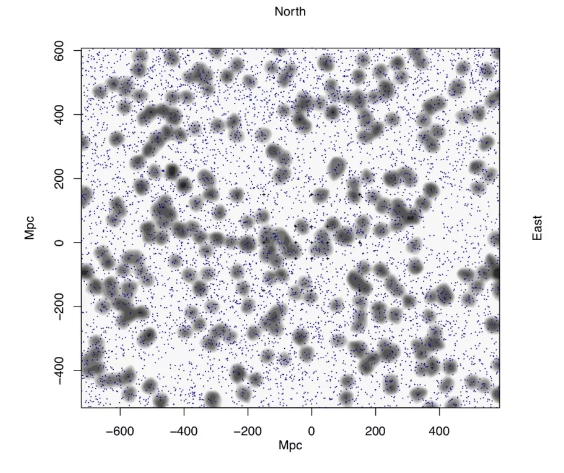- Get link
- X
- Other Apps
- Get link
- X
- Other Apps
A newly discovered crescent of galaxies spanning 3.3 billion light-years is one of the world’s largest known structures, challenging some of astronomers’ most fundamental assumptions about the universe.
crossorigin="anonymous">style="display:block"
data-ad-client="ca-pub-2375157903127664"
data-ad-slot="7629783868"
data-ad-format="auto"
data-full-width-responsive="true">
The epic arrangement known as the Giant Arc is made up of galaxies, galaxy clusters, and a lot of gas and dust. It is located 9.2 billion light-years away and stretches across roughly a 15th of the observable universe.
Its discovery was “serendipitous,” according to Alexia Lopez, a doctoral candidate in cosmology at the University of Central Lancashire (UCLan) in the United Kingdom. Lopez was creating maps of things in the night sky using light from approximately 120,000 quasars, which are distant brilliant cores of galaxies where supermassive black holes consume material and produce energy.
As this light passes through matter between us and the quasars, it is absorbed by various components, leaving telltale traces that can provide important information to researchers. In particular, Lopez used marks left by magnesium to determine the distance to the intervening gas and dust, as well as the material’s position in the night sky.
crossorigin="anonymous">style="display:block"
data-ad-client="ca-pub-2375157903127664"
data-ad-slot="7629783868"
data-ad-format="auto"
data-full-width-responsive="true">
The Giant Arc. Grey regions show areas that absorb magnesium, which reveals the distribution of galaxies and galaxy clusters. The blue dots are background quasars, sometimes known as spotlights. (Image credit: Alexia Lopez/UCLan)
In this way, the quasars act “like spotlights in a dark room, illuminating this intervening matter,” Lopez said. A structure began to develop in the midst of the cosmic maps. “It was sort of a hint of a big arc,” Lopez said. “I remember going to Roger [Clowes] and saying ‘Oh, look at this.'”
Clowes, her doctoral adviser at UCLan, suggested further investigation to guarantee it wasn’t an accident or a data trick. After doing two different statistical tests, the researchers determined that there was less than a 0.0003% probability that the Giant Arc wasn’t real. They presented their findings at the American Astronomical Society’s 238th virtual meeting.
The structure of the Giant Arc is shown in grey, with nearby quasars superimposed in blue. There is a tentative relationship between these two datasets. (Image credit: Alexia Lopez/UCLan.
But the finding, which will take its place in the list of the biggest things in the cosmos, undermines a bedrock expectation about the universe. Astronomers have long held to the cosmological principle, which holds that matter is more or less evenly distributed throughout space at the largest scales.
The Giant Arc is greater than other large buildings like the Sloan Great Wall and the South Pole Wall, both of which are dwarfed by even larger cosmic features. “There have been a number of large-scale structures discovered over the years,” Clowes told Live Science. “They’re so large, you wonder if they’re compatible with the cosmological principle.”
The fact that such massive entities have gathered in particular places of the universe suggests that matter may not have been distributed evenly throughout the universe. However, Lopez added, the current standard model of the cosmos is based on the cosmological principle.
“If we’re finding it not to be true, maybe we need to start looking at a different set of theories or rules.”
Lopez doesn’t know what those theories would look like, though she mentioned the idea of modifying how gravity works on the largest scales, a possibility that has been popular with a small but loud contingent of scientists in recent years.
The South Pole Wall’s founder, Daniel Pomarède, a cosmographer at Paris-Saclay University in France, agreed that the cosmological principle should put a theoretical limit on the size of cosmic things.
Some research has suggested that structures should reach a certain size and then be unable to get larger, Pomarède told Live Science. “Instead, we keep finding these bigger and bigger structures.”
Yet he isn’t quite ready to toss out the cosmological principle, which has been used in models of the universe for about a century.
“It would be very bold to say that it will be replaced by something else,” he said.
Reference(): LiveScience



Comments
Post a Comment